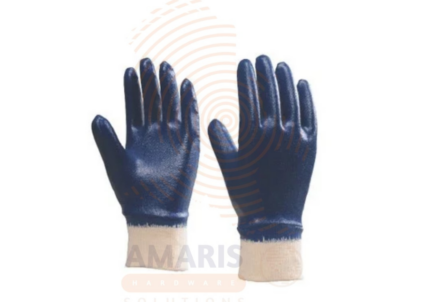Latex Gloves
WhatsApp Order
Latex gloves are protective coverings for the hands made from natural rubber latex. These gloves are commonly used in various industries, including healthcare and laboratory settings, as well as in everyday tasks. Latex gloves provide a barrier against contaminants, bacteria, and viruses, helping to prevent the transmission of infections. They are known for their elasticity, comfort, and tactile sensitivity, making them suitable for tasks that require precision and dexterity. It’s important to note that some individuals may be allergic to latex, and in such cases, alternative materials like nitrile or vinyl gloves may be used.
Description
Major or common uses of latex gloves
- Medical and Healthcare Settings:
- Patient Care: Latex gloves are extensively used by healthcare professionals during patient examinations, surgeries, and other medical procedures to maintain a sterile environment and reduce the risk of infection transmission.
- Laboratory Work: Scientists, researchers, and laboratory technicians use latex gloves to protect themselves and ensure the integrity of experiments and analyses.
- Dental Practices:
- Dental Procedures: Dentists and dental hygienists use latex gloves during dental examinations, cleanings, and various dental procedures to maintain hygiene and prevent cross-contamination.
- Food Handling and Processing:
- Food Service: Latex gloves are commonly used in the food industry for handling and preparing food to prevent contamination and maintain food safety standards.
- Food Processing: Workers in food processing plants use latex gloves to protect their hands and maintain hygiene while processing and packaging food products.
- Cleanroom and Controlled Environments:
- Electronics Manufacturing: In cleanroom environments, such as electronics manufacturing, latex gloves are worn to prevent contamination of sensitive electronic components.
- Janitorial and Cleaning Services:
- Cleaning and Sanitization: Latex gloves are used by janitors and cleaning personnel to protect their hands while cleaning and handling various cleaning agents.
- Automotive Industry:
- Vehicle Maintenance: Workers in the automotive industry use latex gloves when performing maintenance and repair tasks to protect their hands from oils, lubricants, and other chemicals.
- Tattoo and Body Art Studios:
- Tattooing and Piercing: Artists in tattoo and body art studios wear latex gloves to maintain a sterile environment and prevent the spread of infections during tattooing or piercing procedures.
- Chemical Handling:
- Chemical Laboratories: Latex gloves provide protection against exposure to chemicals in laboratories and industries where workers handle hazardous substances.
- Emergency Response and First Aid:
- First Aid: Latex gloves are an essential component of first aid kits and are used by first responders to protect themselves while providing medical assistance.
- Cleaning and Beauty Services:
- Hairdressing and Beauty Salons: Professionals in the beauty industry use latex gloves for hair dyeing, styling, and various beauty treatments to protect their hands and maintain cleanliness.
SAFETY HANDLING PRECAUTIONS
- Select the Right Size: Ensure that you use gloves that fit properly. Gloves that are too tight may tear, while those that are too loose can compromise dexterity and protection.
- Check for Latex Allergies: Before using latex gloves, make sure that you and others in the vicinity do not have latex allergies. Some individuals may develop skin irritation or more severe allergic reactions when in contact with latex.
- Inspect Gloves: Before use, inspect gloves for any visible damage, such as tears, holes, or punctures. Do not use gloves that show signs of damage, as they may not provide adequate protection.
- Hand Hygiene: Wash your hands thoroughly before putting on gloves and after removing them. This helps prevent contamination and ensures that you start with clean hands.
- Proper Application: Put on gloves using proper techniques to avoid tearing or stretching. Pull them over clean, dry hands, and ensure they cover the wrists as well.
- Avoid Touching Face: Once gloves are on, refrain from touching your face, hair, or other body parts to prevent potential contamination.
- Limit Use to Intended Tasks: Use latex gloves only for their intended tasks. Avoid touching surfaces or items that are not part of the designated task to prevent cross-contamination.
- Change Gloves Regularly: Change gloves regularly, especially if they become torn, punctured, or contaminated. Follow the recommended guidelines for changing gloves during tasks.
- Remove Gloves Properly: When removing gloves, do so carefully to avoid any contact with the outer surface. Peel them off from the wrist, turning them inside out as you go. Dispose of them in the appropriate waste container.
- Avoid Prolonged Use: Limit the time you wear latex gloves to avoid potential irritation or moisture buildup. If you need to wear gloves for an extended period, consider changing them regularly.
- Dispose Properly: Dispose of used gloves in designated waste containers. Do not leave them in common areas where others may come into contact with them.
- Educate and Train: Ensure that all individuals using latex gloves are educated and trained on proper glove usage and disposal procedures.
Related products
Cut Resistant Gloves
Cut-resistant gloves are specialized protective garments designed to minimize the risk of injury from sharp objects, such as knives, glass, or sharp tools. These gloves are constructed using materials that possess high levels of cut resistance, often incorporating advanced fibers like Kevlar, Dynnema, or other similar materials. The primary purpose of cut-resistant gloves is to provide a barrier that reduces the likelihood of cuts, lacerations, or abrasions to the wearer's hands while handling potentially hazardous objects or performing tasks that involve sharp edges. These gloves are widely used in various industries, including manufacturing, construction, food handling, and healthcare, where the risk of cuts and injuries is prevalent.
Insulated Safety Boots
Insulated safety boots are a type of footwear designed to provide protection for the feet in hazardous work environments while also offering insulation against extreme temperatures. These boots are commonly used in industries such as construction, manufacturing, and utilities where workers are exposed to various risks, including heavy objects, sharp materials, electrical hazards, and cold weather conditions.
Rubber Coated Gloves (Blue)
A Rubber Coated Gloves (Blue) refers to a type of protective hand wear that is constructed with a base material, commonly fabric or another flexible material, and has a layer of rubber applied or coated onto the surface of the gloves. The rubber coating serves various purposes, such as providing enhanced grip, protection against liquids, chemicals, or abrasions, and potentially increasing the overall durability of the gloves. The "blue" specification in this context likely refers to the color of the gloves, which may have been added for visibility or aesthetic reasons. These gloves are often used in industrial, medical, or other settings where hand protection and tactile sensitivity are important.
Safety Goggles (only for welding)
Safety Goggles (only for welding) are specialized protective eyewear designed to shield the eyes from intense light, sparks, and debris produced during welding operations. These goggles are fitted with dark-tinted or shaded lenses that filter harmful ultraviolet (UV) and infrared (IR) radiation emitted by welding arcs and flames. They offer a snug, wraparound design to prevent particles and light from entering the sides, making them ideal for gas welding, cutting, brazing, and soldering. Their compact form factor makes them a convenient choice for close-up tasks and confined workspaces.
Safety Helmet (Orange)
A safety helmet (orange) is a protective headgear designed to mitigate the risk of head injuries in various industrial, construction, or recreational settings. Typically constructed with a hard outer shell and an inner suspension system, the helmet absorbs and distributes impact energy to reduce the severity of head trauma in the event of accidents, falls, or falling objects. The distinctive orange color serves as a visible indicator, enhancing safety by making wearers easily identifiable, especially in environments where high visibility is crucial. The helmet's design adheres to safety standards to ensure optimal protection for the wearer's head during potential hazards.
Safety Helmet (White)
A Safety Helmet (White), commonly referred to as a hard hat, is a head protection device designed to safeguard individuals from head injuries in various industrial, construction, or other occupational settings. The helmet typically consists of a hard outer shell made of impact-resistant materials, such as high-density polyethylene or fiberglass, and an inner suspension system that helps absorb and distribute impact energy. The white color of the safety helmet may serve functional or visibility purposes, such as enhancing the wearer's visibility in low-light conditions or indicating a specific role or status on a work site. The primary goal of a safety helmet is to provide protection against falling objects, impact, and electrical hazards, promoting the overall safety of individuals in hazardous work environments.
Safety Helmet (Yellow)
A safety helmet (yellow) is a protective headgear designed to mitigate the impact of potential head injuries in various industrial, construction, or recreational settings. Typically colored yellow for high visibility, it consists of a hard outer shell made of durable materials, such as plastic or fiberglass, and an inner suspension system to absorb and distribute impact energy. This safety equipment is crucial for safeguarding individuals from falling objects, impacts, or other potential hazards, promoting occupational safety and minimizing the risk of head injuries.
Welding Glass
A welding glass, also known as a welding lens or welding filter, is a specialized protective eyewear designed for use by welders to shield their eyes from intense light and harmful radiation produced during welding processes. Typically made of a tinted or shaded glass, welding glasses filter out ultraviolet (UV) and infrared (IR) radiation, as well as visible light, to provide adequate protection for the welder's eyes. The level of shading in welding glass is specified by a shade number, with higher numbers indicating greater protection against intense light. Welding glasses are a crucial safety measure to prevent eye injuries and conditions such as arc eye or welder's flash, which can result from exposure to the intense light generated during welding.


 Acrylic Sealants
Acrylic Sealants Construction Adhesives
Construction Adhesives Double-Sided Tape
Double-Sided Tape Duct Tape
Duct Tape Electrical Tape
Electrical Tape Epoxy & Resins
Epoxy & Resins Masking Tape
Masking Tape
 Automotive Wrenches & Socket Sets
Automotive Wrenches & Socket Sets Battery Chargers & Jump Starters
Battery Chargers & Jump Starters Car Jacks & Stands
Car Jacks & Stands Car Wash & Detailing Products
Car Wash & Detailing Products Diagnostic Tools
Diagnostic Tools Tire Inflators
Tire Inflators Vehicle Lighting
Vehicle Lighting Oil & Lubricants
Oil & Lubricants
 Adhesives & Sealants
Adhesives & Sealants Bricks & Blocks
Bricks & Blocks Cement & Concrete
Cement & Concrete Drywall & Plaster
Drywall & Plaster Flooring (Tiles, Wood, Laminate)
Flooring (Tiles, Wood, Laminate) Lumber & Plywood
Lumber & Plywood Paints, Primers & Coatings
Paints, Primers & Coatings Insulation Materials
Insulation Materials Roofing Materials
Roofing Materials
 Circuit Breakers
Circuit Breakers Electrical Cables & Wires
Electrical Cables & Wires Switches & Sockets
Switches & Sockets Fuses & Relays
Fuses & Relays Connectors & Terminals
Connectors & Terminals Electrical Boxes & Panels
Electrical Boxes & Panels Conduit & Fittings
Conduit & Fittings Lighting Fixtures & Bulbs
Lighting Fixtures & Bulbs Extension Cords & Power Strips
Extension Cords & Power Strips
 Anchors
Anchors Bolts
Bolts Clips & Clamps
Clips & Clamps Screws
Screws Nuts
Nuts Washers
Washers Rivets
Rivets Nails
Nails Threaded Rods
Threaded Rods
 Hammers
Hammers Measuring Tools (Tapes, Levels, Calipers)
Measuring Tools (Tapes, Levels, Calipers) Screwdrivers
Screwdrivers Pliers & Cutters
Pliers & Cutters Saws & Blades
Saws & Blades Chisels & Punches
Chisels & Punches Allen Keys & Hex Keys
Allen Keys & Hex Keys Ratchets & Socket Sets
Ratchets & Socket Sets Wrenches & Spanners
Wrenches & Spanners
 Power Tool Accessories (Blades, Bits, Discs)
Power Tool Accessories (Blades, Bits, Discs) Rotary Tools
Rotary Tools Saws (Circular, Jigsaw, Reciprocating)
Saws (Circular, Jigsaw, Reciprocating) Drills & Drivers
Drills & Drivers Grinders & Sanders
Grinders & Sanders Heat Guns
Heat Guns Nail Guns
Nail Guns Impact Wrenches
Impact Wrenches Batteries & Chargers
Batteries & Chargers
 Pipes & Fittings (PVC, Copper, PEX)
Pipes & Fittings (PVC, Copper, PEX) Plumbing Tools
Plumbing Tools Pumps & Motors
Pumps & Motors Sealants & Adhesives for Plumbing
Sealants & Adhesives for Plumbing Valves & Taps
Valves & Taps Water Heaters
Water Heaters Drainage Systems
Drainage Systems Faucets & Fixtures
Faucets & Fixtures Hoses & Tubing
Hoses & Tubing
 Hinges & Latches
Hinges & Latches Hooks & Brackets
Hooks & Brackets Window Hardware
Window Hardware Chains & Cables
Chains & Cables Casters & Wheels
Casters & Wheels Shelving & Storage Systems
Shelving & Storage Systems Door Handles & Locks
Door Handles & Locks Drawer Slides & Cabinet Hardware
Drawer Slides & Cabinet Hardware
 Personal Protective Equipment (PPE)
Personal Protective Equipment (PPE) Respirators & Masks
Respirators & Masks Safety Glasses
Safety Glasses Safes
Safes Security Cameras
Security Cameras Gloves
Gloves Helmets
Helmets Ear Protection
Ear Protection Fire Safety Equipment
Fire Safety Equipment Locks & Padlocks
Locks & Padlocks Motion Sensors & Alarms
Motion Sensors & Alarms
 Garden Fencing
Garden Fencing Garden Furniture Hardware
Garden Furniture Hardware Lawn Mowers
Lawn Mowers Trimmers & Edgers
Trimmers & Edgers Shovels & Spades
Shovels & Spades Rakes & Hoes
Rakes & Hoes Pruning Shears & Loppers
Pruning Shears & Loppers Watering Systems (Hoses, Sprinklers, Nozzles)
Watering Systems (Hoses, Sprinklers, Nozzles)
 Interior Paints
Interior Paints Paint Brushes & Rollers
Paint Brushes & Rollers Paint Strippers & Thinners
Paint Strippers & Thinners Paint Trays & Accessories
Paint Trays & Accessories Exterior Paints
Exterior Paints Spray Paints
Spray Paints Primers & Undercoats
Primers & Undercoats Varnishes & Stains
Varnishes & Stains
 Gaskets & Seals
Gaskets & Seals Hydraulic Fittings
Hydraulic Fittings Industrial Fasteners
Industrial Fasteners Industrial Hoses
Industrial Hoses Lubricants & Greases
Lubricants & Greases Metal Sheets & Bars
Metal Sheets & Bars Bearings & Bushings
Bearings & Bushings Belts & Pulleys
Belts & Pulleys
 HVAC Filters
HVAC Filters Insulation for HVAC
Insulation for HVAC Air Conditioners
Air Conditioners Refrigerants
Refrigerants Ventilation Ducts & Fittings
Ventilation Ducts & Fittings Thermostats & Controllers
Thermostats & Controllers Fans & Blowers
Fans & Blowers
 Pegboards & Hooks
Pegboards & Hooks Shelving Units
Shelving Units Storage Bins & Containers
Storage Bins & Containers Toolboxes & Tool Chests
Toolboxes & Tool Chests Workbenches
Workbenches Drawer Organizers
Drawer Organizers Labeling Supplies
Labeling Supplies
 Welding Accessories (Clamps, Brushes)
Welding Accessories (Clamps, Brushes) Welding Electrodes & Rods
Welding Electrodes & Rods Welding Helmets & Gloves
Welding Helmets & Gloves Welding Machines
Welding Machines Soldering Irons & Stations
Soldering Irons & Stations Flux & Solder Wire
Flux & Solder Wire
 Generator Accessories
Generator Accessories Inverters
Inverters Portable Generators
Portable Generators Power Inverters
Power Inverters Transfer Switches
Transfer Switches Diesel & Gasoline Generators
Diesel & Gasoline Generators
 Transport Equipment: Carts, Dollies, and Hand Trucks
Transport Equipment: Carts, Dollies, and Hand Trucks Storage Solutions: Pallets, Racks, and Containers
Storage Solutions: Pallets, Racks, and Containers Lifting Equipment: Hoists, Cranes, and Jacks
Lifting Equipment: Hoists, Cranes, and Jacks Conveyors and Accessories: Belts and Rollers
Conveyors and Accessories: Belts and Rollers









